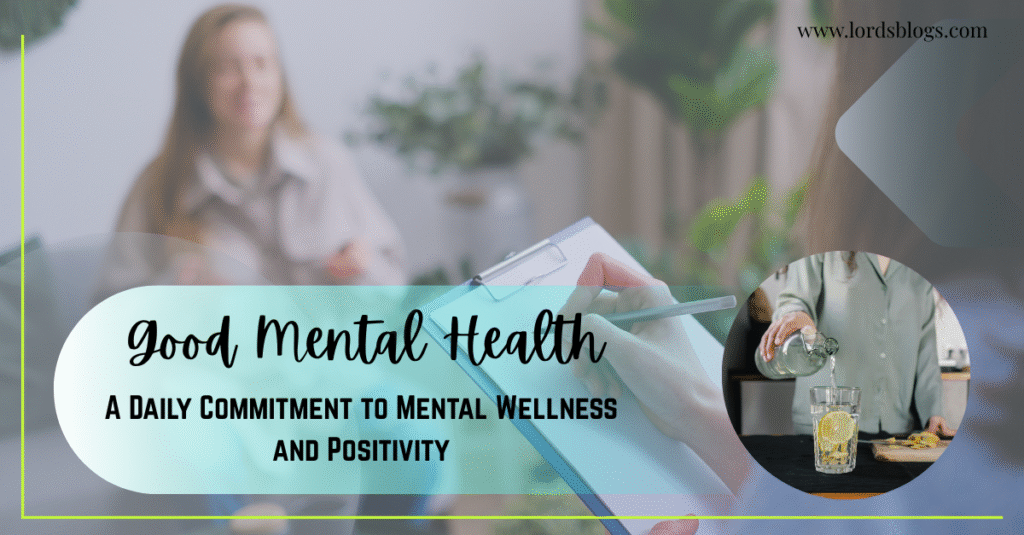Introduction
In today’s high-stress environment, many individuals struggle to maintain emotional balance and resilience. Lack of proper mental health check-ins, rising anxiety, and social media pressures have made it harder to sustain good mental health. So, what does positive mental health look like, and how can one achieve it consistently? This article answers those questions by exploring mental health awareness, body positivity, daily wellness habits, and visual tools like a mental health vision board to nurture long-term emotional stability.
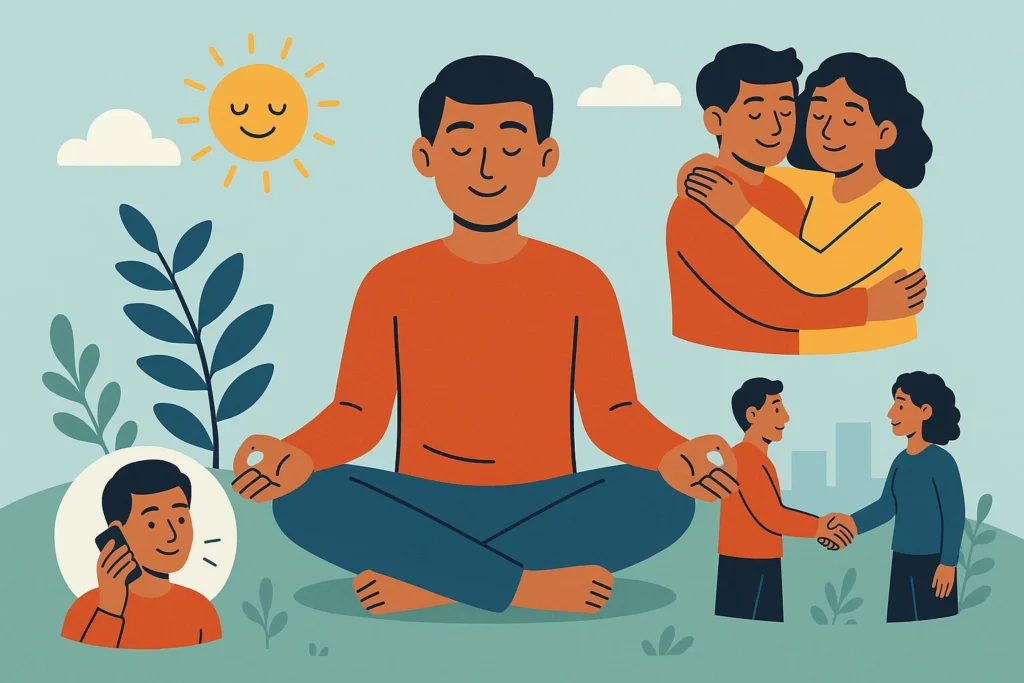
What is Good Mental Health?
Good mental health is not just the absence of illness—it includes emotional, psychological, and social well-being. According to the Centers for Disease Control and Prevention (CDC), mental wellness helps people handle stress, relate to others, and make healthy decisions (CDC, 2023).
Positive mental health means:
- Feeling balanced and optimistic
- Coping effectively with life’s challenges
- Maintaining satisfying relationships
- Contributing productively to society
Body positivity and emotional expression are critical to achieving these goals. Integrating mental health awareness into daily routines builds resilience and reduces the risk of burnout.
Importance of a Regular Mental Health Check-In
Many people perform regular physical health assessments, but how often do they check in with their mental health? Mental health check-ins help individuals identify emotional patterns, prevent emotional overload, and course-correct before things spiral.
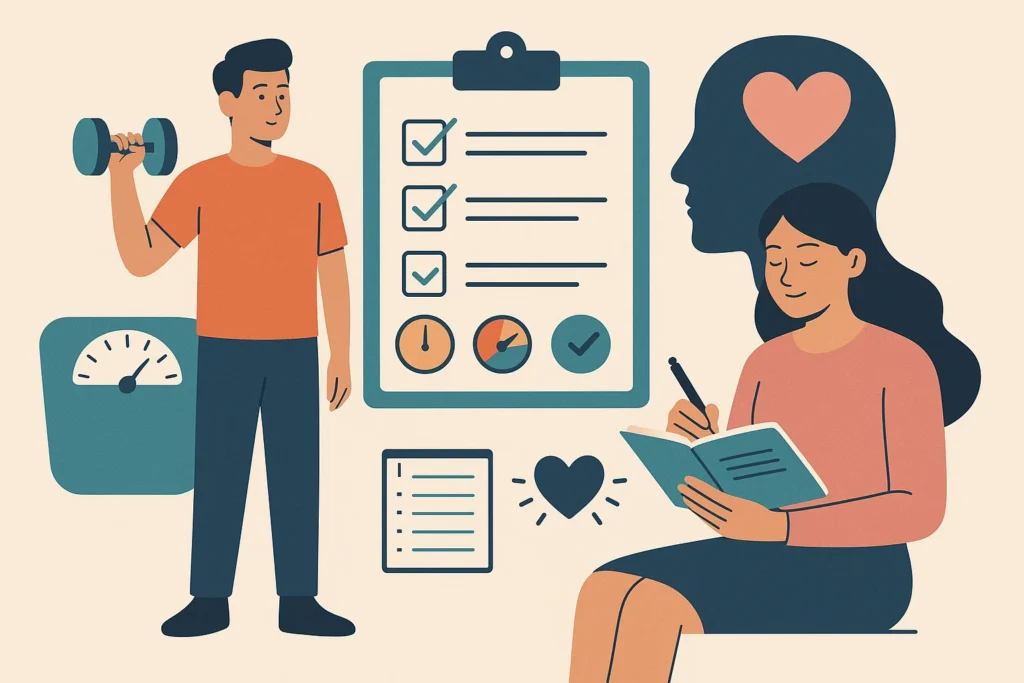
Tips for effective check-ins:
- Ask yourself daily: “How am I feeling emotionally?”
- Use journals or mood-tracking apps
- Rate stress and energy levels
- Set self-care goals for the week
Frequent check-ins can be combined with a Self Care Vision Board, creating a visual representation of wellness goals and mental clarity.
Daily Habits That Promote Mental Wellness
Good mental health doesn’t happen overnight. It’s a result of consistent, mindful practices. Here are science-backed habits that promote mental wellness:

- Getting 7–9 hours of sleep per night (Sleep Foundation, 2023)
- Exercising at least 30 minutes, 3–5 times per week
- Practicing gratitude and journaling
- Nourishing the body with whole, nutrient-rich foods
- Taking “mental health days” when needed
A mental health day allows for rest and reflection—a crucial step in avoiding burnout and reigniting emotional energy. Practicing body positivity through affirmations also reinforces internal harmony and acceptance.
Creating a Mental Health Vision Board
A Mental Health Vision Board is a curated collage of images, quotes, and goals focused on emotional and psychological wellness. Unlike traditional goal boards, this one emphasizes healing, inner peace, and stress management.
Key elements:
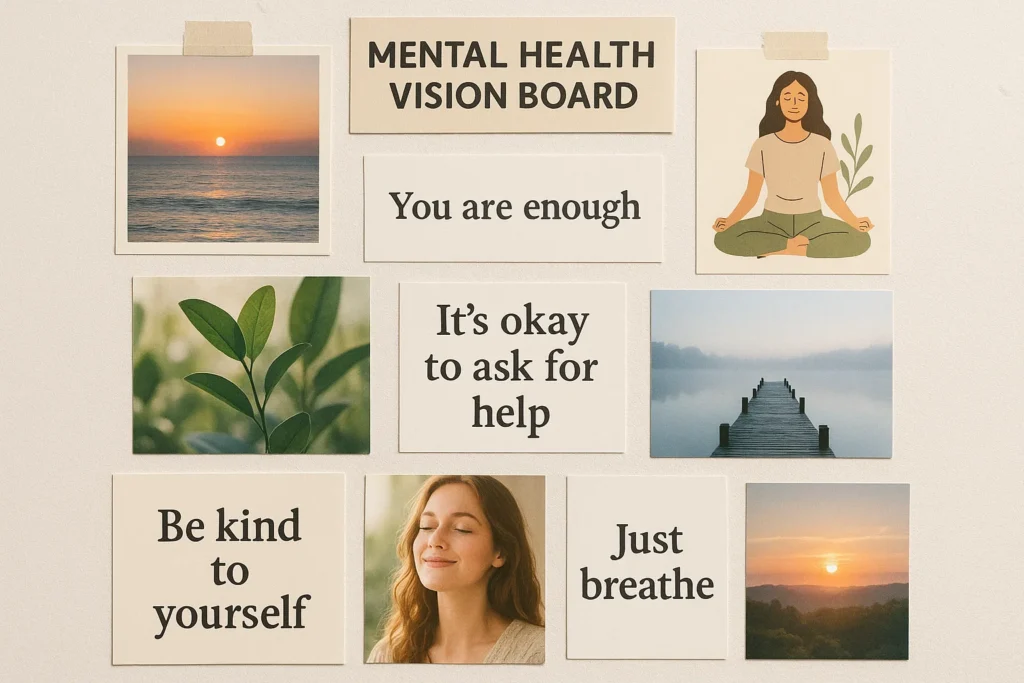
- Motivational mental health quotes like “Healing is not linear”
- Imagery promoting calm, confidence, and joy
- Affirmations centered on self-love and mental clarity
- Goals like “weekly therapy,” “digital detox,” or “walks in nature”
This tool can be digital or physical and updated during mental health check-ins. It aligns personal growth with visual reminders of progress and purpose.
Spreading Mental Health Awareness and Reducing Stigma
Spreading mental health awareness empowers communities to normalize conversations about well-being. When people understand mental health facts—such as that 1 in 5 adults in the U.S. experience mental illness yearly (NAMI, 2023)—they become more compassionate and proactive.
Ways to spread awareness:
- Participate in campaigns like Mental Health Day (Oct 10)
- Share stories or motivational mental health content on social media
- Volunteer for mental health nonprofits
- Educate others through workshops or blogs
This kind of advocacy drives social change and encourages people to adopt positive mental health practices.
Reinforcing Positive Mental Health Through Community and Support
Isolation can deteriorate mental health quickly. Building a community of support—whether online or offline—is vital. Emotional support, shared experiences, and validation all contribute to long-lasting wellness.
Support systems can include:
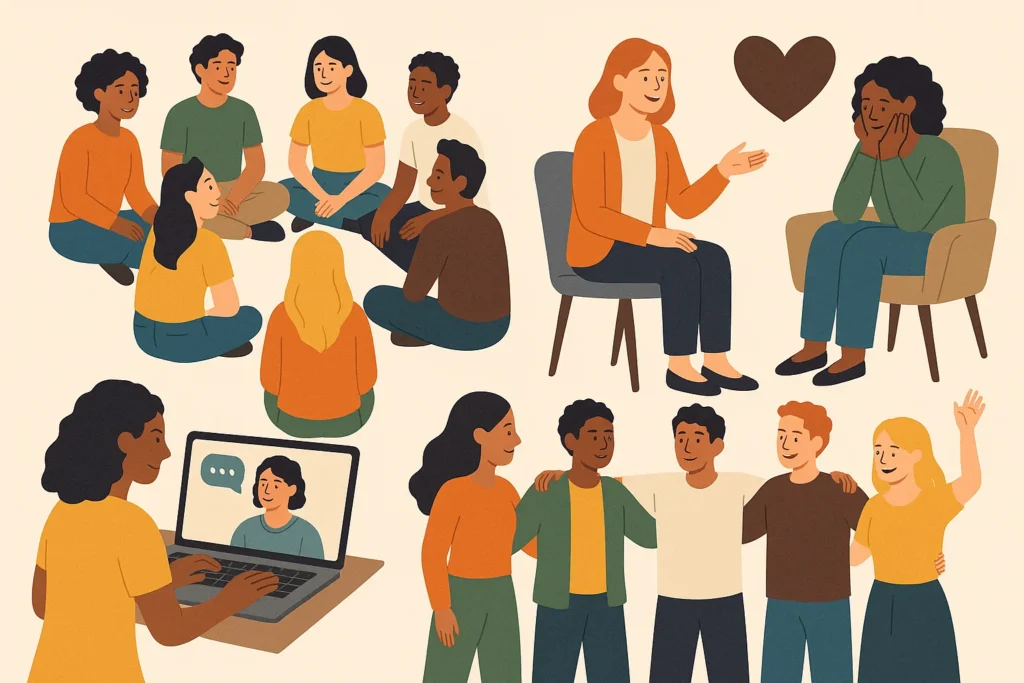
- Peer groups or support circles
- Therapy or coaching
- Online forums focused on mental wellness
- Regular social time with friends or family
These relationships act as emotional anchors, reducing stress and enhancing emotional regulation.
FAQ: Frequently Asked Questions
Q1: How often should someone do a mental health check-in?
A1: Daily check-ins are ideal, but even weekly self-assessments can greatly improve awareness and prevent emotional burnout.
Q2: What are some practical tools to maintain good mental health?
A2: Journals, meditation apps, self care vision boards, therapy, and consistent routines all contribute to mental wellness.
Q3: What is the difference between mental wellness and mental illness?
A3: Mental wellness is a proactive state of emotional well-being, while mental illness refers to diagnosable conditions that may require treatment.
Q4: Can positive mental health be sustained long term?
A4: Yes, through lifestyle consistency, awareness, and support, individuals can maintain long-term emotional balance and resilience.
Conclusion
Good mental health is an ongoing journey, not a destination. Through daily mental health check-ins, self-care rituals, visual tools like a mental health vision board, and community support, individuals can cultivate a resilient and fulfilling emotional life. Promoting mental health awareness and prioritizing emotional wellness ensures that people don’t just survive—they thrive.
